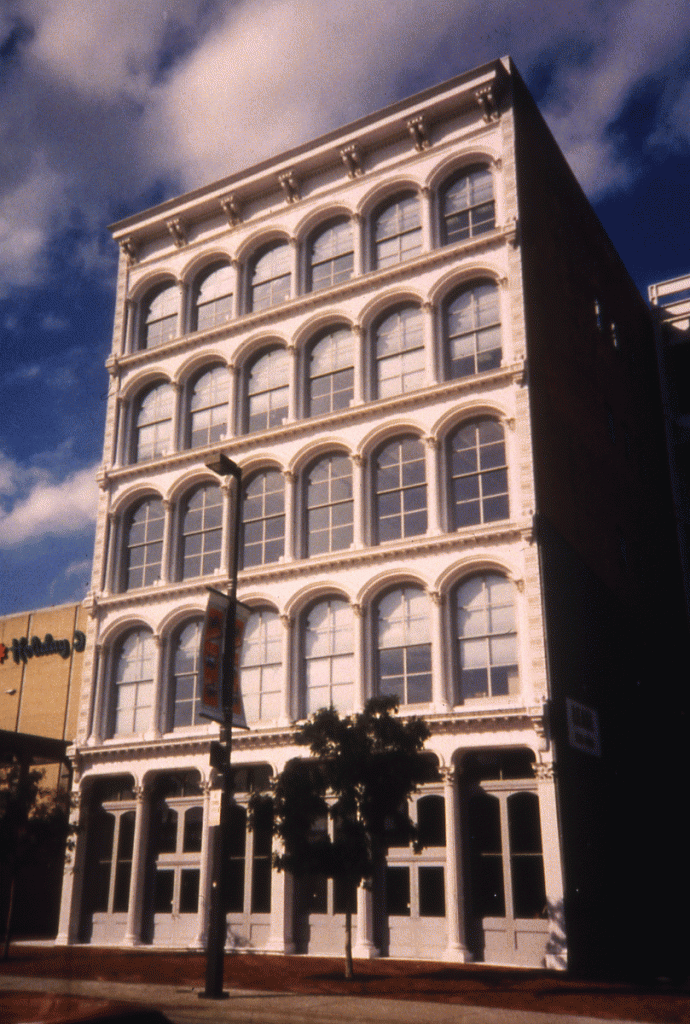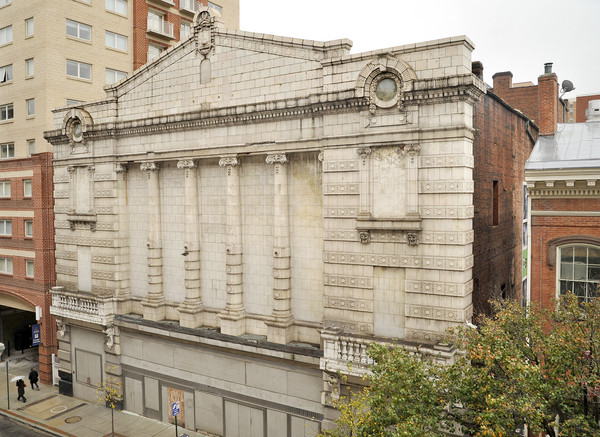Urban Land Institute offers recommendations for city’s west side, The Baltimore Sun, December 10, 2010
Tag: West Side
Baltimore Building of the Week: Cast Iron Baltimore
This week’s entry in our Baltimore Building of the Week series is Baltimore’s Cast Iron Buildings,

Another version of the Italian palace that dominated Baltimore architecture in the middle of the 19th century was not executed in traditional materials like marble (Peabody Institute) or brick (Old Loyola College). Instead it used cast iron and large sheets of glass – both made more abundant by the Industrial Revolution. In 1850, James Bogardus of New York obtained a patent for a system of iron construction. His first great commission was the Sun Iron Building in downtown Baltimore, sadly destroyed in the Great Baltimore Fire. Bogardus and his imitators went on to build a number of iron-and-glass commercial palaces across the United States, often cast by Baltimore foundries like Heyward, Bartlett, & Co. and Denmead’s Monumental Foundry.
Baltimore Building of the Week: Cemetery Gates
This week is a bit darker than usual with a set of three historic cemetery gates in Baltimore, including the Westminster Burying Ground, Greenmount Cemetery, and the Baltimore Cemetery on North Avenue.

Baltimore’s explosive growth in the late 18th and early 19th century soon created a demand for burial sites. The Presbyterian burial ground on West Fayette Street was established in 1786 and is the final resting place of many eminent early Baltimoreans, including Edgar Allen Poe. The Egyptian-style gate was probably added during the eclectic period in American architecture in the 1840s. Later, still larger cemeteries turned to the Gothic Revival style. Robert Cary Long, Jr., designed the elaborate gatehouse for Green Mount Cemetery in the mid 1840s; the less well known gatehouse for Baltimore Cemetery seems to be from about the same era. It stands at the eastern end of North Avenue.
Behind the Scenes Tour of the Town Theater
The only theater in Baltimore (perhaps the entire country) to go from a theater to a parking garage and then back to a theater, the historic Town Theater has a long and colorful history with burlesque, vaudeville, and cinema. Work has just begun for its newest life as the future home of the Everyman Theatre, which is moving from its location on Charles Street. Please join us and Everyman director Vincent Lancisi for a tour of the historic Town Theater midway through its transformation.

Tour Information
Date: Wednesday, May 5, 2010
Time: 5:30 to 6:30 p.m.
Place: 315 West Fayette Street
(Between Howard and Eutaw, one block from the Hippodrome)
Parking is available in nearby lots, or better yet, take the Light Rail!
Cost: $10
Registration: Click Here to Register
Baltimore’s West Side Story Revisited
In a great new post on Baltimore Brew, Joan Jacobson and Elizabeth Suman lay out the story of the continuing threats to Baltimore’s historic West Side, an area that has been listed on the Baltimore Heritage Preservation Watch List for nearly 10 years. Among the dozens of irreplaceable buildings still threatened with demolition is the Art Deco styled 1934 Read’s Drug Store, designed by renowned Baltimore architecture firm Smith & May, the same firm that created the iconic Bank of America Building. In January 1955, following a year of negotiations with Read’s, a sit-in demonstration organized by the Baltimore Congress of Racial Equality led to the desegregation of 37 Read’s lunch counters citywide, establishing a enduring association between this downtown corner and the struggle for civil rights in Baltimore and the state of Maryland.
Baltimore’s West Side Story from Baltimore Heritage on Vimeo.
For many, the story of fighting for preservation on Baltimore’s West Side is a familiar one. In 1999, the National Trust for Historic Preservation identified the West Side as one of America’s 11 Most Endangered Historic Places. In the early 2000s, Baltimore Heritage, Preservation Maryland, and West Side Renaissance created Baltimore’s West Side Story, produced by West Side Renaissance director Ronald Kreitner. This documentary screened daily at the historic Senator Theater, introducing audiences to the vital issues at stake in the preservation of historic buildings and small businesses on Baltimore’s West Side. Enjoy the whole 9 minute video to learn more or jump to 1:04 for a special cameo by former Mayor and Governor William Donald Schaefer as a born-again preservationist.
